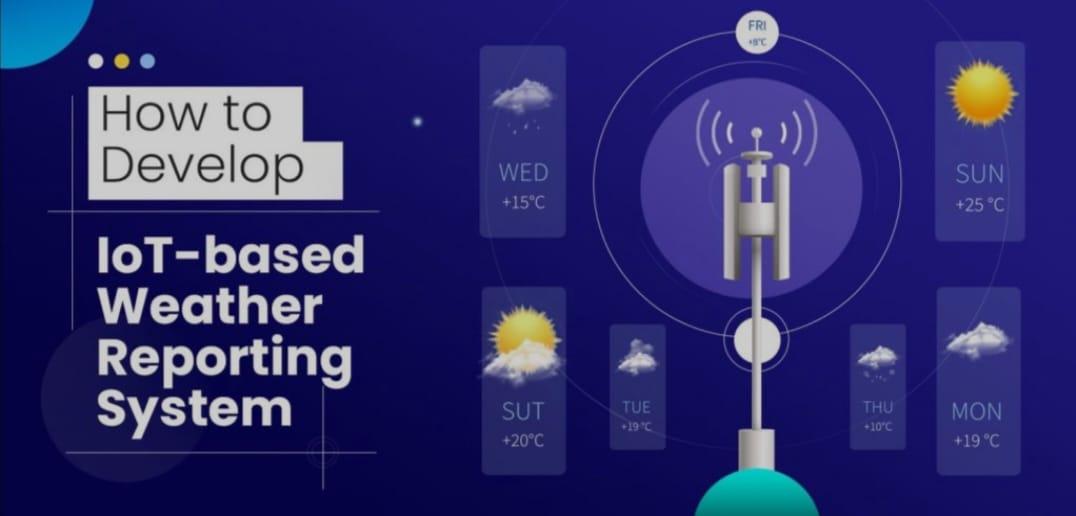Inquire
Building a Smart Weather Station Using IoT

A Smart Weather Station using Internet of Things (IoT) technologies allows for real-time environmental monitoring with high precision. These systems gather atmospheric data and transmit it wirelessly for analysis, visualization, and forecasting.
Core Components & Technologies :
-
Microcontrollers:
Commonly used devices include the ESP32, ESP8266, or Arduino Uno, chosen for their GPIO availability and inbuilt Wi-Fi or Bluetooth support. -
Sensors:
-
DHT11/DHT22 – Measures temperature and humidity.
-
BMP180/BME280 – Captures barometric pressure and temperature.
-
Rain Sensor (YL-83) – Detects rainfall intensity.
-
Anemometer – Measures wind speed and direction.
-
UV/Light Sensor (BH1750/TSL2561) – Monitors light and UV index.
-
-
Connectivity Protocols:
-
Wi-Fi (IEEE 802.11) – For high-speed local data transmission.
-
LoRa (Long Range Radio) – For low-power, long-range communication in remote areas.
-
MQTT (Message Queuing Telemetry Transport) – Lightweight protocol for sensor-to-server communication.
-
-
Cloud Platforms:
Data from sensors is sent to cloud-based services like ThingSpeak, Blynk, Google Firebase, or AWS IoT Core for visualization, alerting, and analytics. -
Data Processing & Visualization:
Real-time sensor values are processed and displayed using dashboards, mobile apps, or web interfaces. Tools like Node-RED, Grafana, or Power BI enhance user interaction. -
Power Supply:
The station may use solar panels, Li-ion batteries, or DC power supplies to ensure energy-efficient and autonomous operation. -
Data Logging and Forecasting:
Sensor data is stored in NoSQL databases (e.g., MongoDB, InfluxDB) for historical trend analysis. Machine Learning algorithms can also be integrated for predictive forecasting.
Security & Maintenance:
-
Data encryption via TLS/SSL ensures secure transmission.
-
OTA (Over-the-Air) updates allow firmware upgrades without physical access.
-
Edge computing can be implemented to process data locally and reduce cloud dependency.
- Managerial Effectiveness!
- Future and Predictions
- Motivatinal / Inspiring
- Other
- Entrepreneurship
- Mentoring & Guidance
- Marketing
- Networking
- HR & Recruiting
- Literature
- Shopping
- Career Management & Advancement


 SkillClick
SkillClick